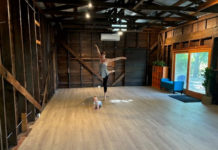Bo Simons
Two wine giants, each with a love of horses, each from different
centuries, have made some news in the past week.
Jess Jackson made headlines this past week by not making
headlines. When he failed to make Forbes magazine’s list of
billionaires, it was front-page news. Jess is reportedly battling
cancer, not for the first time, and is stepping down from an active
role in his company, not for the first time. He tried to retire
once in 2000, but was back at the helm by 2005. But that was not
his first retirement. He retired to his Lake County ranch in the
1970’s after careers as a cop, lawyer, and real estate developer.
Both Jess and his company were mum about the state of his health
and it was only “sources close to the company who spoke on
condition of anonymity” that talk about the 81-year-old’s current
cancer.
Jess Jackson came into the wine industry during something that
was not quite a retirement, but at least enjoying the good country
life on weekends after being a successful real estate lawyer. He
bought an 80-acre pear and walnut orchard in Lake County, put in
vineyards and sold his fruit to area wineries until the 1981 slump
in grape prices made him think of making his own wine. He first
made wine under the name of Chateau du Lac, and then came out with
the Kendall Jackson. He really studied what people wanted in a
Chardonnay and crafted a sweeter profile with his one of his first
winemakers, Jed Steele. He named a wine “Vintner’s Reserve,” which
connotes a pricey reserve and sold it above the fighting varietal
price bracket and built an 18,000 case gamble into a several
million case dream success story in a few years.
Jess is no stranger to controversy, although many admire his
business acumen, stewardship and philanthropy. He sued Jed Steele
after the winemaker had left his employ to keep him from revealing
or using the secret formula for his Vintners Reserve Chardonnay. He
sued Gallo for copying the distinctive KJ label for its Turning
Leaf brand. His instincts led him to enter an industry in which
Benzinger and Fetzer were pioneering fighting varietals at $5 to $7
a bottle. He aimed a little higher in quality and price. His
environmental chops include using solar powered weather stations
and wireless telemetry to minimize water use, planting more than
10,000 oak trees on his tens of thousands of acres throughout
California, championing use of integrated pest management, cover
crops and low chemical use to insure sustainability. He owns vast
amounts of vineyard land, but leaves half of it unplanted to
maintain balance.
He has also spent tens of millions on race horses, and in this
he shares a passion with Isaac De Turk, another Sonoma County wine
king. On St. Patrick’s Day, 2011, the City of Santa Rosa dedicates
an event facility that occupies De Turk’s round white horse
barn.
Isaac De Turk came to Santa Rosa in 1862, a 24 year-old man from
Indiana, planted a vineyard in Bennett Valley, and within a few
years had wineries there and near Cloverdale and Railroad Square.
De Turk wines were among the first Sonoma County wines to bear a
label and be exported nationally and internationally. His brick
winery still stands, a block long building with a million gallon
capacity. De Turk wines were good solid wines. They were renowned
for quality and consistency, and produced in huge quantities. He
was a leader in the industry. When the Phylloxera crisis hit in the
1880’s, De Turk became a Viticultural Commissioner, and worked
tirelessly with scientists, academics and industry leaders to find
a cure for this dread vineyard plague that threatened the wine
industry worldwide. The 1888, 1891 and 1893 surveys that De Turk
helped produce to document phylloxera’s devastation stand among the
great source documents in wine history.
The red brick winery building became Grace Brothers Brewery, and
now might become condos. The magnificent white round barn that
housed his incredibly expensive trotters was neglected for years. A
flashy barn built to house pampered horses in an urban setting, the
out-of-place structure eventually became city property and was a
storage facility. A long and successful effort ensued with a grant
from the California Cultural and Historical Endowment. The restored
barn celebrates its emergence as a wedding, party and classroom
facility with a party on Thursday, March 17, starting about 3 p.m.
at 819 Donahue St in Santa Rosa.
Bo Simons is the Wine Librarian. He can be reached at **@so****.us or
433-3772.
48.9
F
Healdsburg
April 20, 2025







